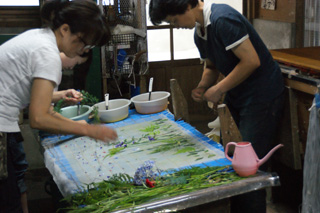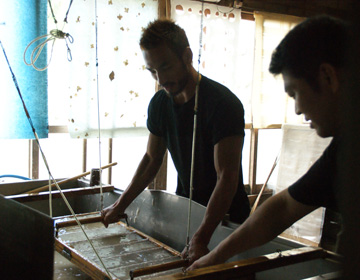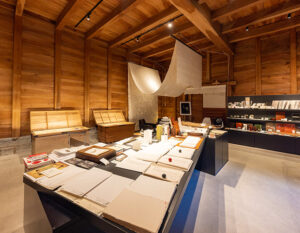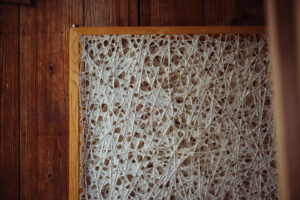Using the original species of paper mulberry
”Nao Washi” which has more than 300 years history in Saga, is a handmade Japanese ”washi” paper which uses the strong bark of paper mulberry trees. The paper is intricate and has shimmer. Since it has a reputation for being the most durable ”washi”, craftsmen prefer to use it for wide a variety of crafts and interior products such as paper for ”chouchin” lanterns or ”shoji” sliding doors.
During the Genroku era or the late 17th century, Nao was known as the home for ”washi”, but now, Hizen Nao Washi Kobo is the only manufacturing site which has continued the tradition. The ingredient of Nao washi is the original species of paper mulberry tree. Paper mulberry has an especially long fiber, makes it intertwine more, making the paper strong even when it is thin. At Hizen Nao Washi Kobo, they grow their own paper mulberry trees, giving them organic fertilizer.
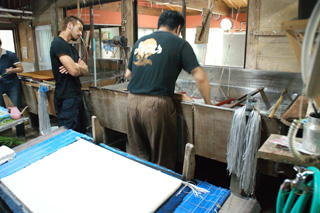
Nao handmade washi paper incorporating plants
”Washi” production involves the repetition of detailed manual work which consists of steaming the tree bark to make it soft, extracting the harshness by rinsing with clean water, and then manually removing the small specs of dirt by hand. At Taniguchi’s workshop, they put the roots of plants (glue) and fiber into ”the boat”, blend and adjust to make high quality ”washi”, or mix plants like silver grass or flower petals during the process to make art paper, in an effort to preserve the traditional method of making Japanese ”washi” paper.
